Choosing the best screen for a smartphone
A few years ago, when choosing a smartphone, a rare user wondered what the matrix was in it, and what technologies were used in production. Basically, the size of the display was evaluated, someone wanted a big one, and someone wanted a small one. Today, the matrix is a weighty argument when choosing a device, so this text will tell you which screens of smartphones exist, and which one is better to choose.
Content
Matrix Type Overview
Currently, the display type is one of the first criteria for choosing a phone, so it makes sense to start the review with the types of screens of smartphones and their differences.There are not so many types, but a lot depends on the size of the matrix. Displays for smartphones now manufactured according to two main technologies:
- liquid crystals (LCD), these include IPS and TN matrices;
- Organic LEDs - AMOLED.

The TFT matrix is the basis for creating all other types of smartphone displays. A TFT can be decoded as a thin-film transistor, a thin film of transistors that controls each individual subpixel. Its existence became the basis for the production of all of the above matrices, including AMOLED. This is especially true for TN and IPS matrices, which sometimes makes their comparison not the most correct. The difference between them is that amorphous silicon is used for TN matrices, while polycrystalline silicon is used for IPS. Its advantage is a high pixel density and low power consumption.
TN
TN matrix today considered the cheapest and easiest to manufacture. It is characterized by low viewing angles, low color accuracy, poor contrast. Most often, this type of matrix is put into smartphones of a cheap segment. The advantage of this type can be considered the price, as well as low response time, which is important for playing games. Despite this, the cons of TN displays outweigh the pros, so Today technology is considered obsolete.
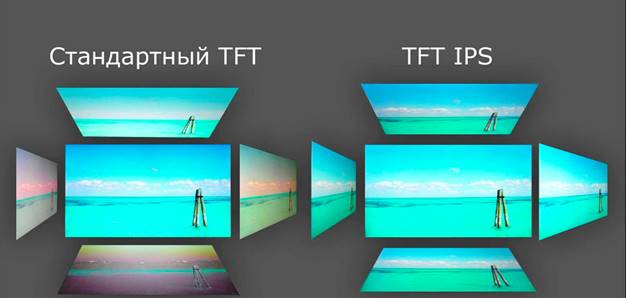
IPS
IPS matrix can be called the most common type of smartphone displays. They have a large viewing angle (can reach 180 degrees), realistic color reproduction, high pixel density. In addition, they are quite inexpensive, which allows you to put them in devices from the middle price segment to the most expensive devices. IPS matrices have division within the group:
- AH-IPS - created by LG;
- PLS - produced by the Samsung brand;
- Retina - Apple.

It makes no sense to compare these matrices, since their characteristics are generally the same.
On a note! If we talk about cheap and expensive IPS matrices, then the first ones can be distinguished by low color rendition (at the corners the picture fades), and also by fading as the device is used.
It should be understood that IPS matrices have many subspecies, each of which has an emphasis on different aspects of work - energy efficiency, brightness, contrast. The most important advantage of the IPS display is natural color transfer at the level of the matrix itself. Displays created using this technology do not need a separate software setting or processor intervention in its operation.Everything is initially transmitted as needed. This IPS matrix is better than AMOLED.
AMOLED
A separate segment are matrices based on organic light-emitting diodes. This technology has received the name OLED, in the medium of phones its brand Samsung is engaged in its production, which gave its development the name AMOLED. The difference of these matrices in low energy consumption, the depth of black and rich colors. Many people believe that the AMOLED matrix is sometimes too saturated, therefore, when making a smartphone, the way the matrix is configured is of great importance.
It may happen that the device will be too contrast, and it will be extremely inconvenient to use it. It was said above that the IPS display does not need to be configured, the same cannot be said about the AMOLED screen. Often in expensive phones put the best display, which generally is in the world, but due to incorrect settings, it does not allow to fully enjoy the image. A simple example is the novelty of 2017 - the iPhone X. Apple has bought displays from Samsung, but it has not been able to correctly configure them to get a good image. In 2018, the situation changed in the XS and XS Max models, the matrix remained the same, but the correct setting made the picture much better.Otherwise, AMOLED matrices can be called the best screen of a smartphone in 2018, and it is not surprising that the most expensive devices use these matrices as a screen.
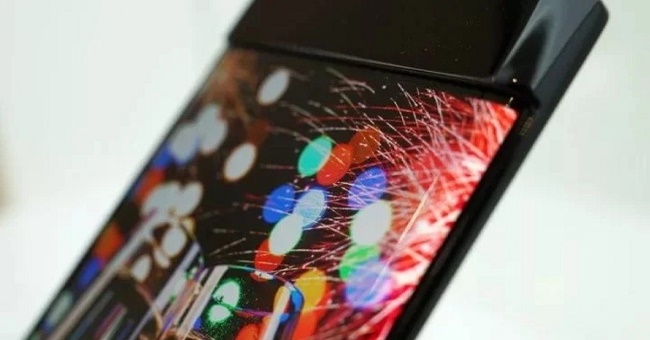
Important! About AMOLED worth knowing that they have a limited lifespan - about 3 years of continuous operation. Given the fact that the display of the smartphone is not always on, this is quite enough.
QLED
We should also mention the technology for the production of the matrix - QLED. She is currently active used in the manufacture of televisions, but development is underway for the implementation of these displays in the production of smartphones. In this case, the technology is based on quantum dots that glow by themselves. The advantage of the QLED matrix over AMOLED is in better contrast, color accuracy, brightness, and lower power consumption. In addition, they do not need to fine-tune how Amoled.
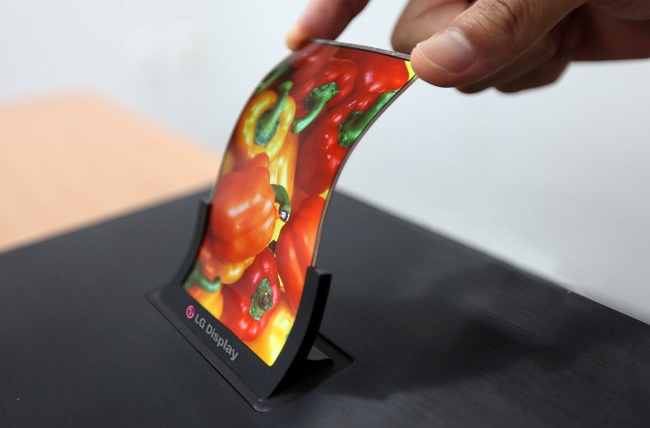
Total
At the end of the discussion on the types of the matrix, the following can be distinguished: the best matrices at this time are AMOLED, the following IPS displays, which can differ among themselves in production technology. At times, a high-quality IPS screen can be quite a bit inferior to the AMOLED display, and this will be noticeable only in specialized tests, but not during normal use of the device.TN arrays are outdated, and there is no point in dwelling on them, since for the same price you can purchase a simple IPS display, which will be better compared.
Design features of the screen
Choosing the best display, you should pay attention to other features of its manufacture - the presence of an air gap, curved edges, lack of frames, the number of simultaneous touches, the force of pressing.
Air gap
Some technologies created by developers find their application in production, while others eventually disappear as not promising. The so-called OGS technology is of the first type, and in its time it created a real sensation. For a long time, the device screen of the smartphone was a kind of sandwich, which consisted of several layers - protective glass, air gap, directly the matrix. The essence of OGS lies in the fact that engineers have learned to remove a layer of air, and thus the matrix becomes directly part of the protective glass. That is, the picture is on the glass, and not under it.
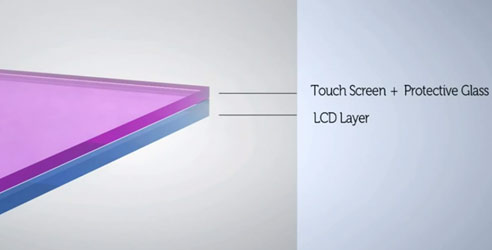
The difference in this case is noticeable even with the naked eye - the viewing angle becomes higher, and the picture is more accurate and juicy in colors. Today, the types of screens without air gap behind the scenes have become the main ones and are used in almost every device, regardless of price.
Important! The technology has its minus - earlier in case of glass damage, it was necessary to change only the top layer, that is, glass, today the entire matrix requires replacement.
Curved display
Quite a new trend that Samsung introduced into smartphones is a curved display. The first phone with a curved screen was Samsung Galaxy Edge. The curved edges of the matrix not only make the device more visually interesting, but also allow us to make useful functions for these faces. In addition, visually The picture becomes more voluminous.
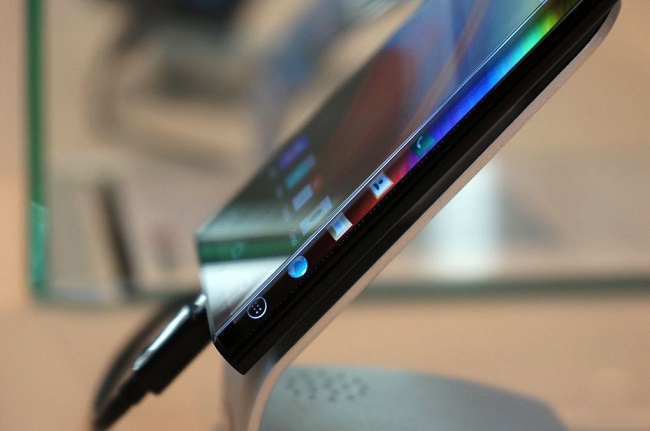
A technology adept is Samsung, and it is their phones that have similar matrices. However, a few years ago it was possible to find in the shop windows LG smartphones from Flex series, which had a bend in the center of the device in such a way that the device perfectly lay in the hand.
On a note! Another useful feature of the development from LG is the protection of the device in case of a fall.When falling face down, the phone hit the upper edges, but not the entire surface of the matrix, which saved it from having to be replaced.
Curved LG phones are not widely spread, so today the company has refused them.
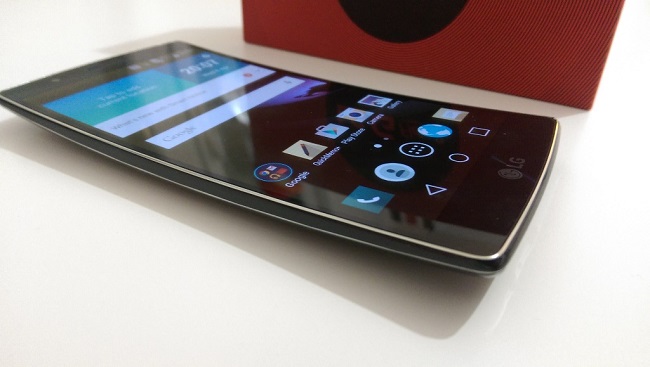
Another interesting trend associated with curved screens - 2.5D displays. Here it is not the matrix that is bent, but the surface of the screen in such a way that all the faces smoothly flow into each other. From the point of view of displaying information, there is no difference, but in terms of ergonomics, the phones have become more comfortable, and similar glasses are found in many middle-priced devices from various manufacturers.
Frameless display
Another fashionable trend, but far from new in terms of its emergence, is the lack of a display frame. Sharp began to produce such matrices in 2014, but the world saw the first such smartphone in 2016, and it became Mi Mix from the Chinese brand Xiaomi. In fact, it is not quite true to call devices frameless, since the frames are still there, they just have a minimum size. At the moment there are several variations of such a performance - the matrices stretched upwards, when the frames are missing on the sides,devices with the lower edge, as well as screens, which have almost no frames at all, and all the elements of the front panel are placed on the small patch from above.

The latest kind of smartphones appeared in 2017 with a phone from Apple - iPhone X. Models that are produced after this device, most of them are made with such displays. By reducing the scope of the manufacturers managed to fit a large diagonal in a relatively small case. In addition, it became possible to increase the aspect ratio of the useful display area. If earlier the standard was considered 16: 9 screens, then today it is increasingly possible to meet phone with a matrix of 18: 9, 19: 9.
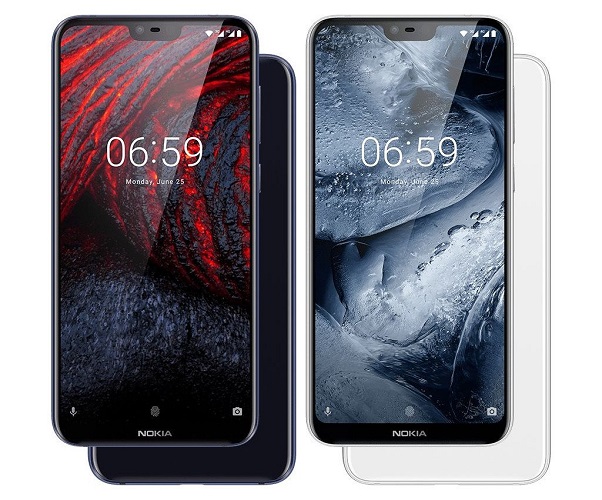
On a note! It is important to understand that this technology does not carry any real benefits or advantages, so the question of which screen is better for a smartphone does not have an answer, it all depends on the preferences of the owner.
Force push
Pressing force recognition technology originally appeared Apple has an iPhone 6s smartphone. Its essence is that the display understands the force of pressing on the screen, and depending on this, performs one or another action. At first glance it seems that this is not very useful or convenient, but those users who have learned to use the function, note an increase in the level of comfort.
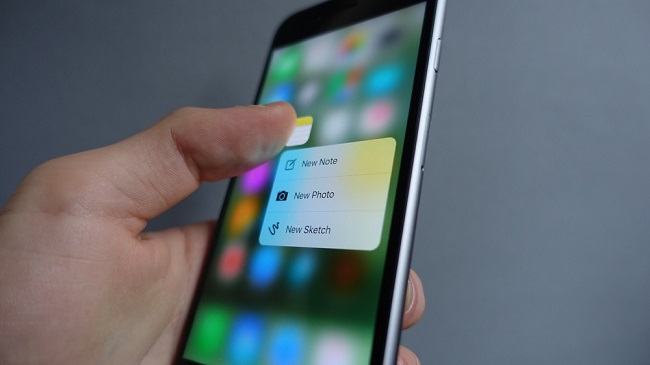
In fact 3D Touch has three options. - quick press, medium and long. The sensitivity of the matrix can be adjusted in the settings. What happens with one or another press:
- Quick tap opens the application (image, file);
- the middle one opens the preview;
- long calls up the context menu, which offers different options for action.
For example, by clicking quickly on the mail icon, the user will immediately get into the application, and if he presses on the icon, a menu will appear with different actions — write a letter, read the inbox, and so on.
At present technology is actively used by AppleAlthough the official information from the brand states that in 2019 it will not be in the new devices. In addition, some Chinese brands are trying to use the development in their devices, but they have not achieved much success in this field.
Number of touches
An important parameter that many people do not pay attention to is the number of simultaneous touches. It determines which tasks on the device can be performed and which are not. Modern screen can recognize 2,3,5,10 touches. Every user uses this daily, but does not even think about it.

On a note! The first phone that began to understand 2 touches was created by Apple. For him, two touches made it possible to scale the image by sliding two fingers to different sides of the display. Today, any phone can do that.
The second model of using the device, which requires several touches - the game. Most often user uses at least 2 fingers during the game to control the character and perform other actions - running, hitting, shooting, acceleration. A rare modern phone does not understand gestures. The opportunity to work with them again requires the support of several touches. Many musicians put on their devices music programs, where necessary simultaneously press different keys, and this also requires the support of multiple touches from the device. The vast majority of expensive smartphones have the maximum number of touches - 10. In cheaper models, the number can be 5. A smaller number practically does not occur.
Types of screen coverage
In the first generations of smartphones, and some years after that, the display was used as a display cover. thin plastic plate. She had a lot of minuses - quickly scratched, broken, unpleasant tactile sensations. Over time, manufacturers began to work in this direction.
Gorilla glass
In many high-quality smartphones in recent years, you can see glass from the company Corning, which was named Gorilla Glass, as a matrix protection. It is a scratch resistant coating that is difficult to scratch or break. It does not distort the color, unlike the plastic layer. There are several generations, and the highest quality at the moment is the fifth, which can be found on premium phones. Previous generations are widespread in less expensive models.
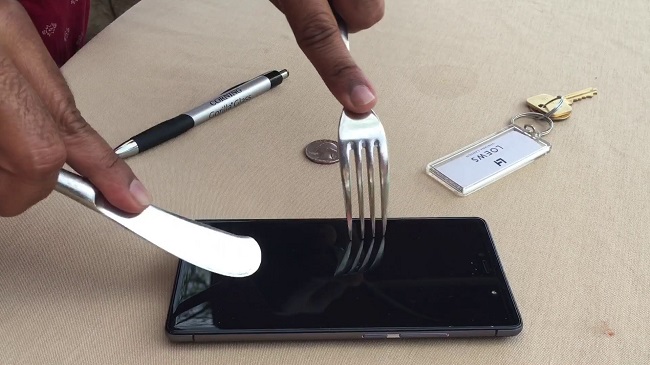
Oleophobic coating
The display glass constantly interacts with the fingers. Due to this, prints, greasy stains and other unpleasant traces appear on the screen. To protect against their occurrence was created grease repellent layer, which is called oleophobic. It not only opposes the appearance of prints, but makes them easy to remove. Another important point: with the presence of such coverage sliding your finger on the screen becomes more pleasant and simple.
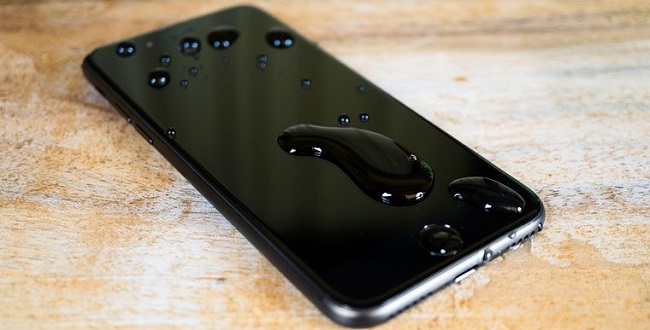
Anti-reflective coating
Any smartphone owner has come across a situation where it is impossible to see anything in the summer in direct sunlight on the display. There are two ways to deal with this:
- set the maximum brightness of the backlight, which puts the battery faster and does not always help;
- use anti-glare layer.

Relatively recently, before the appearance of a special layer on the matrices in the store, sellers offered to buy matte film, which has anti-glare properties. Its essence is that it disperses the sun's rays and increases the visibility on the screen. The disadvantage of such films is in the reduction of color rendition, and one has to choose - to lose color or to get an opportunity to get rid of glare.
Today, display manufacturers have created a similar layer that is applied directly to the screen. Its advantage is that the device does not glare in the sun, allows you to view the image. In addition, this layer does not spoil like a film, that is, it does not need to be changed. But the most important difference from the film - layer does not affect the quality of the display colors, the screen remains bright and beautiful. The function is useful, so when choosing a smartphone, you should check with the seller whether it is on the matrix, and it is best to know this information in advance in the reviews of the device, as is often not indicated in the technical specifications.
Diagonal selection and resolution
The diagonal and resolution for the screen are important, and these two parameters are always nearby. It can be argued that to some extent another depends on one.
Diagonal selection
The diagonal is measured in inches. One inch equals 2.54 cm, that is, the five-inch screen is 12.7 cm. Correctly measure the screen diagonal solely on the matrix from one angle to the opposite without capturing the frame. The frame does not affect the diagonal, which is why in the description you can see the parameter - the physical size, and it is measured in centimeters. Accordingly, to find out the diagonal of the screen, it is enough to measure the distance from one angle from another angle to another, and then divide this number by 2.54.

It’s hard to answer the question what is the optimal screen size. Modern smartphones offer users options from 3.5 to 7 inches.It is impossible to choose the best here, it all depends on the preferences of the owner, as well as the model of use.
- The buyer, who is engaged in physical labor, and the smartphone uses exclusively for calls, is more suitable for a small device, since the probability of its damage is minimal.
- For work and constant use of the Internet it is more convenient to take the average version from 5 to 5.7 inches. It is convenient to work with one hand and is great in the pocket.
- For those who draw, play, watch movies, read or conduct presentations on the device, a device of 5.7 inches or more would be an excellent option. These phones are inconvenient to carry in your pocket and work with them with one hand, but the size of the display will allow you to see the smallest details on the image.
In other words, when choosing a device, it is necessary to understand what tasks it will perform, as well as to try the device on ergonomics.
It is interesting! The fashion for the diagonal is changing: once the manufacturers were trying to reduce the display, and everyone wanted to buy a small device, then the so-called fablets came into vogue - a transitional version from smartphone to tablet.Today, users want to get a small phone in size, but with a large matrix. This is facilitated by the emergence of a new aspect ratio, as well as frameless devices.
Resolution
If you choose a diagonal difficult enough, then everything is a bit easier with resolution. The concept of resolution is the ratio of the number of pixels per unit area. The higher the ratio, the clearer and more accurate the picture. It should be understood that the same resolution will look different on different screen sizes of smartphones. After all, one number of pixels on the larger diagonal makes their density less, which means that the picture becomes grainy. When choosing and comparing devices, this point should be taken into account. You can generally take for a rule this relationship: large diagonal - large resolution.

Important! Pixel density is abbreviated as PPI. In fact, you can not think about how many inches the screen, and what the number of pixels in it, and compare the density. For example, one phone has a PPI of 443, and another 403, which means that the first model will have a less grainy image.
Today there are no specific rules for the resolution of the phone, depending on the diagonal, but you can select the most popular ones:
- 840 * 480 points - up to 4.5 inches;
- 1280 * 720 (HD) - from 4.5 to 5 inches;
- 1920 * 1080 (FHD) - from 5 inches and above.
In addition, expensive devices with large diagonals also have higher resolution, for example, QHD - 1440 * 2560 points. This is one of the highest options for the ratio of points to the area, and today for an expensive smartphone to have a lower resolution is considered a minus. You should not overpay for such a permit on a small matrix, the difference on the diagonal of 5.5 inches between the resolutions of FHD and QHD will not be visible.
Smartphones with two screens
In conclusion, the topic of displays should recall another interesting trend, which is not widespread, but is occasionally found in smartphones. We are talking about devices with two screens.

Usually the second display is small and serves to display additional information, such as notifications or control some functions. This is a rather peculiar trick, which is far from being necessary for every user, therefore smartphones with 2 screens are not too common.

The second display can be created using one of the above technologies - IPS or AMOLED, or it can be completely different - for example, with electronic ink technology. Initially, it was created for e-books, since the feature of the production of such matrices allows you to make them optimal for reading (they do not flicker, the eyes do not get tired), and besides, they have such minimal power consumption that they practically don’t put the battery on. An example of a phone with this display is Russian YotaPhone, here the entire back panel is an E-ink (electronic ink) matrix. It displays notifications, displays hours and other useful features.

One of the brightest representatives of modern devices with an auxiliary display - Meizu Pro 7. An additional screen is created by AMOLED technology, its diagonal is 1.9 inches, and the resolution is 240 * 536 pixels. It is used to display a notification, create a selfie picture on the main camera, as well as to perform a limited set of functions.
List of best-selling smartphones according to buyers in 2018
Smartphone Apple iPhone Xs Max 64GB on Yandex Market
Xiaomi Mi8 6 / 128GB Smartphone on Yandex Market
Xiaomi Redmi S2 4 / 64GB smartphone on Yandex Market
Xiaomi Mi Max 2 64GB Smartphone on Yandex Market
Smartphone ASUS ZenFone 5Z ZS620KL 8 / 256GB on Yandex Market

/rating_off.png)











